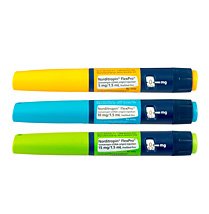Why Free Testosterone Levels Matter

Low testosterone is definitely a condition worthy of concern, but if your family doctor only tests you for total testosterone, you may not receive an accurate diagnosis or treatment plan.
The most important reading of all when doing a blood test for hormone deficiency is your free testosterone levels. Why does free testosterone matter more than total testosterone?
It is not that it matters more; it is because it paints an entirely different picture as to what is going on in the body. You may have perfectly normal total testosterone levels, but if your free testosterone levels are low, you have a serious issue. What that means is that the testosterone in your bloodstream is having a hard time breaking free of SHBG (sex hormone binding globulin).
What does free testosterone level mean and why does it attach to SHBG in the first place?
When testosterone enters the bloodstream, it must attach to a protein to move through the blood vessels before it reaches its targeted receptors on tissues and detaches into what is called a “free” state. Only then can testosterone perform its duties.
The only other difference is the small percentage of testosterone moving through the bloodstream loosely bound to albumin, which is also bioavailable to the receptors.
If you have low free testosterone levels and normal total testosterone levels, then the testosterone cannot perform its functions since it is remaining bound to SHBG. Of course, if your total testosterone levels are significantly low, you will probably need to look into testosterone therapy if symptoms of Low T are present.
What Are Normal Free Testosterone Levels?
The first thing to realize when looking at the charts below is that what is considered normal as far as free testosterone levels by age is just an average of a multitude of people. Individual numbers may vary greatly. Some people have extremely low free testosterone levels, but experience no symptoms of Low T. Others fall in the lower portion of the normal range, yet are dealing with a variety of changes in their bodies.
In each free testosterone levels chart below, you will find information that doctors use to determine if you can benefit from testosterone replacement therapy.
In the chart of free testosterone levels in males, you will see a difference between the free testosterone range and the average level of free testosterone. What that means is that you can expect to feel the best in most cases if your free testosterone levels do not dip below the average.
| Age | Free Testosterone Range | Average Free Testosterone |
| Men 30 – 39 | 4.65 – 19.0 pg/mL | 11.8 – 12.84 pg/mL |
| Men 40 – 49 | 4.26 – 17.1 pg/mL | 11.1 – 12.42 pg/mL |
| Men 50 – 59 | 3.87 – 15.6 pg/mL | 10.5 – 11.38 pg/mL |
| Men 60 + | 3.47 – 13.9 pg/mL | 9.4 – 10.71 pg/mL |
Women are a bit different as their testosterone levels are naturally much lower than those of a male. We have two different charts below. The first shows normal free testosterone levels. Female measurements are determined by age – under and over 50 years.
| Normal Free Testosterone Levels | pg/mL Range |
| Women Under 50 Years of Age | Over 1.5 |
| Women Over 50 Years of Age | Over 1.0 |
This second chart shows bioavailable testosterone because it is offset by whether or not a woman is on oral estrogen – something a man does not have to contend with in his life.
| Bioavailable Testosterone Levels in Women | ng/dL Range |
| 20 to 50 Years of Age Not on Oral Estrogen | 0.8 – 10 |
| 20 to 50 Years of Age on Oral Estrogen | 0.8 – 4.0 |
How to Determine Free Testosterone Levels
To determine whether or not you have Low T by checking free testosterone levels, you will need to have your blood measurements assessed by a lab.
The free testosterone level blood test is just part of the diagnostic process. Total testosterone, a complete blood count, a check for growth hormone deficiency, pituitary gland functions, and other essential blood panels are also compared.
To undergo hormone blood testing for the diagnosis of low testosterone or other hormonal imbalances, you will want to contact a hormone replacement therapy (HRT) specialist. These doctors have the expertise necessary to treat conditions associated with high or low hormone levels.
To raise free testosterone levels high enough to reverse the symptoms stemming from Low T, careful calculations are based on blood analysis, physical examination, health history, and current symptoms. This assessment lets the doctor know how much testosterone to prescribe and how often to administer the treatments.
For more information on checking your free testosterone levels, please contact Greenberg Health to speak with a clinical advisor. Consultations are confidential and provided at no charge.


















 Norditropin
Norditropin






